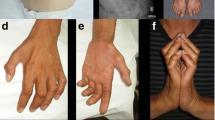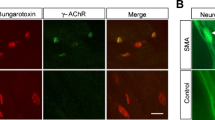Abstract
Childhood spinal muscular atrophy (SMA) is a common autosomal recessive disorder which is characterized by muscle weakness due to degeneration of motoneurons in the spinal cord and brainstem nuclei. Positional cloning strategies have revealed several gene candidates including the genes for the survival motoneuron (SMN) and the neuronal apoptosis inhibitory protein (NAIP). Both genes are duplicated on chromosome 5. Homozygous deletions/mutations of the telomeric SMN gene, which is expressed from both copies on human chromosome 5, are associated with the disease. Recent reports suggest involvement of the SMN protein in the formation of spliceosomal particles in the cytoplasm and in the regeneration of spliceosomes in the nucleus. These data put spinal muscular atrophy into a growing group of disorders of RNA metabolism which also include fragile-X syndrome and myotonic dystrophy. Relevance of these previous data for the pathogenesis of the disease are discussed in this review.
Similar content being viewed by others
Author information
Authors and Affiliations
Rights and permissions
About this article
Cite this article
Jablonka, S., Rossoll, W., Schrank, B. et al. The role of SMN in spinal muscular atrophy. J Neurol 247 (Suppl 1), I37–I42 (2000). https://doi.org/10.1007/s004150050555
Issue Date:
DOI: https://doi.org/10.1007/s004150050555




